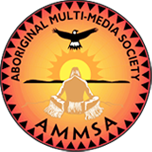Article Origin
Volume
Issue
Year
Page 2
An effort, spearheaded by Kapown Centre ? an addictions treatment centre operated by the Grouard Indian band, is being extended for the establishment and development of a Woodland Cree Interpretive Centre and anthropological field station at Grouard.
Kapown Centre's Verna Neville says that Grouard band chief Frank Halcrow "has donated suitable land for such a centre and would like advice and assistance of local, community, regional, governmental, and interested agencies in achieving the plan."
A steering committee has been meeting on the subject for a number of months. This committee includes the mayors of Slave Lake and High Prairie, as well as representatives of Improvement District 17 Central, MLA Larry Shaben, Lesser Slave Lake Indian Regional Council, AVC Grouard, the tourist associations of Land of the Mighty Peace and Midnight Twilight, Metis Association of Alberta, Roman Catholic Church, and regional planning commission.
The steering committee is to oversee, under the direction of Halcrow, a feasibility study.
The Woodland Cree Interpretive Centre is to operate in conjunction with a University of Alberta anthropological field station. "It is to reflect not only the past of the Woodland Cree, but also the present, thereby becoming a part of the living community," according to the terms of reference for the study.
Being examined is the possibility of establishing the interpretive centre in a structure that would be part of an expansion to the Kapown Centre facility in Grouard.
It is to include space for the interpretation of the history and culture of the Woodland Cree, the past and present told on a national scale. A public eating area is required, as is space for Native arts and crafts sales. Educational needs include seminar and conference rooms and a large theatre.
The anthropological field station will contain a laboratory and dark room, an audio-video room, as well as classrooms or lecture rooms.
In addition, there are plans for living and facilities for field station staff. It is expected the field station alone will need arrangements for the director and family, three camp supervisors, 25 students, and a camp cook.
Though Slave Lake mayor Bill Pearson expressed support for the project at a steering committee meeting last September, he was quoted in Slave Lake, Scope (Oct. 14) as being "disappointed".
Slave Lake had earlier proposed the establishment of a Native cultural interpretive centre.
"We shared information we put together with the region. They took that information from here and used it against us," Pearson was quoted as saying.
The Slave Lake committee, he said, was "astounded about the whole thing. There is not the infrastructure in Grouard to support such a centre. There are no adequate hotels, restaurants, or housing to accommodate tourists or permanent staff," the mayor was quoted as saying.
Meanwhile, Doctor Cliff Hickey of the department of anthropology at the University of Alberta told the Grouard steering committee that the field station will definitely be established, no matter what the status of the interpretive centre development.
Doctor Frits Pannekoek, director of historic sites of Alberta Culture, said he views the Woodland Cree Interpretive Centre as an exciting proposal for a community project. He said it has the potential for development on a national scale, but noted it will require considerable capital.
Details on the source of funds are not yet available.
- 2395 views
